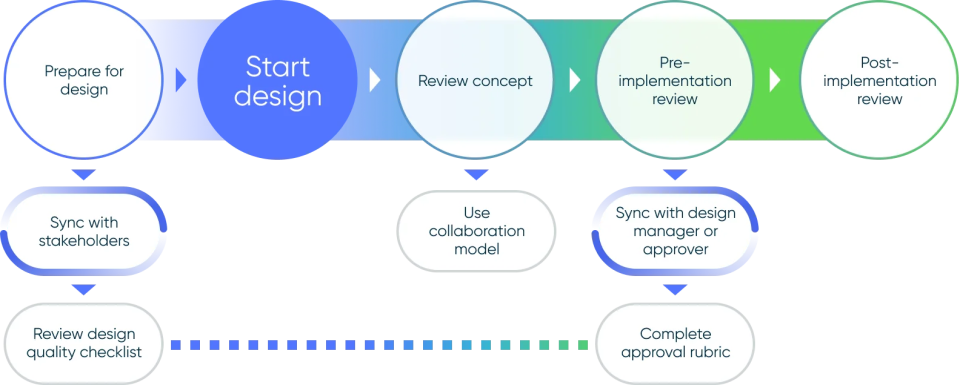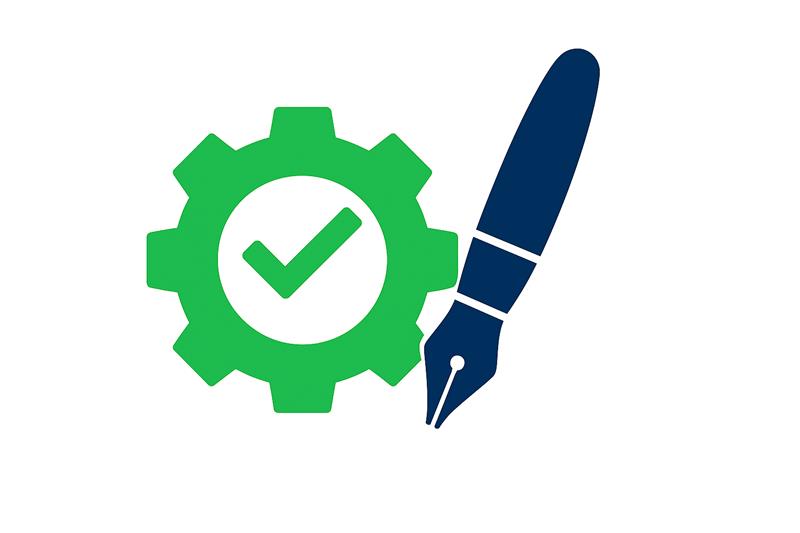You already know that Horizon empowers ServiceNow creators to design better enterprise experiences. But you know who else does that? Design Operations.
Design Operations, or DesignOps, is like the behind-the-scenes engine that keeps our design practice running smoothly. Inspired by DevOps, DesignOps focuses not on what we design, but how design happens. Our “end users” aren’t customers — they’re the designers themselves. In other words, we design for designers.
Our mission is simple:
- Enhance the accuracy, consistency, and effectiveness of design work
- Free up time and energy for designers to focus on what they do best — designing
At ServiceNow, DesignOps isn’t just one role. It’s a mindset shared across ICs, managers, and leaders. And we put it into action through three pillars: Process, People, and Partnerships.
Process: Designing the design process
DesignOps keeps our design practice connected, measurable, and evolving. Here’s how it shows up at ServiceNow:
The Experience Quality Framework (EQF)
A structured way to ensure design quality across the product lifecycle. EQF includes:
- A design quality checklist that defines what “good” looks like
- A collaboration model that connects designers with experts early — not just at hand-off
- Pre- and post-implementation reviews to verify that designs are delivered as intended

The Experience Quality Framework we use at ServiceNow
Horizon contribution model
We rely on the expertise of design teams across ServiceNow to create and maintain content on Horizon. DesignOps supports this with a clear, step-by-step contribution flow, making it easy for designers to share their expertise and keep guidance fresh.
Release tracking
We help design teams use ServiceNow tools to track stories, understand capacity, and log design bugs, giving visibility into what’s shipping and where improvements are needed.
Design defects
Defects aren’t just engineering issues. They can also reveal when a delivered experience doesn’t match the intended design. Our DesignOps team expanded defect management training to include designers, helping us track usability and visual issues alongside technical ones.
By classifying and tracking design-related defects, we can now measure UX quality more reliably, closing the gap between intended and delivered experiences.
People: Designing for enablement
DesignOps is also about people: helping designers grow their skills, stay informed, and feel connected.
One example is The Gradient, our monthly design forum and newsletter. It’s part event, part storytelling platform, bringing together speakers from across EX Design to share insights, updates, and inspiration.
DesignOps curates the content, hosts the event, and amplifies our experts, making sure their work reaches the broader community.
Partnerships: Building bridges
DesignOps builds the connective tissue between teams, making sure design has a seat (and a voice) at every table.
We collaborate closely with Product Management, Engineering, and Quality partners to streamline workflows and reduce friction. We also work with Learning and Development teams to ensure design perspectives are woven into onboarding and growth programs across the org. Because when our partnerships are strong, design moves faster, products get better, and teams are happier.
The future of DesignOps: Humans + AI
As AI reshapes the design landscape, DesignOps is evolving once again — from optimizing human workflows to enabling intelligent, adaptive systems.
Our goal isn’t to replace designers with AI. It’s to amplify their impact. That means:
- Making workflows more frictionless and data-informed
- Designing systems that keep up with the pace of creation
- Balancing efficiency with ethics, and automation with human oversight
There’s still a lot to learn. But one thing is certain: AI is here, and it’s changing how we work. By approaching it with curiosity, responsibility, and creativity, we’re not just adapting; we’re helping shape what comes next.
Learn more
If you’d like to dive deeper into DesignOps as a discipline, check out:
- DesignOps Assembly: in-person events and async connection opportunities
- DesignOps: A Rosenfeld Community: an active community of DesignOps professionals and resources

